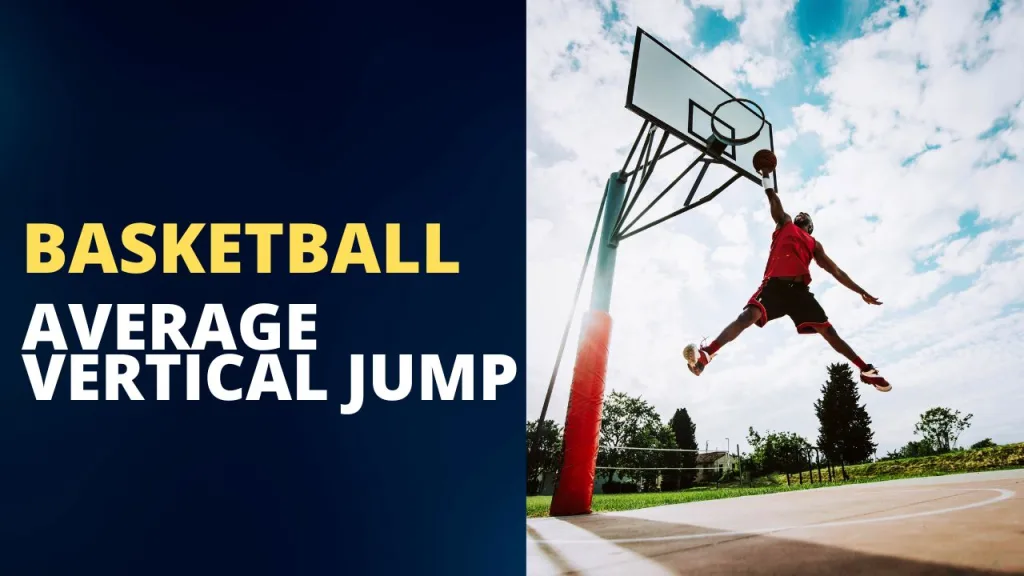Last Updated on: 24th January 2024, 12:46 am
The average NBA vertical jump is approximately 28 inches (71 cm). However, vertical leaps can vary among players and positions.
The average vertical jump has increased over the years, with the average in the 2022/2023 season reported as 39.4 inches.

Let’s dive in!
Average Vertical Jump Stats Among NBA Positions
- Point Guards: Typically agile, averaging 28-34 inches vertical jumps.
- Shooting Guards: Require long-range scoring capabilities, with 30-36 inches jumps.
- Small Forwards: Versatile players averaging 29-35 inches.
- Power Forwards: Known for strength, they average 28-34 inches in their vertical leaps.
- Centers: The tallest players are typically the tallest on the court and have the highest vertical jump, ranging from 30 to 36 inches.
Average Vertical Jump By Height
In the NBA, vertical jump ability varies with player height, but there isn’t a direct correlation. Shorter players, like guards, often have higher vertical leaps relative to their height due to their lower center of gravity and lighter body mass.
For example, a 5’9″ player can achieve vertical jumps over 40 inches. Taller players, such as forwards and centers, generally have lower relative vertical leaps, but their height and wingspan allow them to reach high elevations.
A 7-foot tall player might need only a 30-inch leap to match the absolute height a 6-foot player reaches with a 40-inch jump.
This variation underscores the diverse physical demands across different positions in the NBA.
Average NBA Vert By Year
- 1960s-1970s: During this era, players were generally less focused on specialized training for vertical leap. The average vertical might have been lower compared to later years. Athleticism was valued but not as rigorously developed as in later decades.
- 1980s: This era saw the rise of exceptionally athletic players like Michael Jordan and Dominique Wilkins, whose leaping abilities were well above average. However, the overall average vertical leap in the NBA might still have been moderate, as comprehensive explosive strength training was not yet normal.
- 1990s: The average vertical leap likely gradually increased as training methods focused more on explosiveness and plyometrics. The presence of high-flyers like Vince Carter and Kobe Bryant indicated a shift towards greater athleticism.
- 2000s-2010s: A significant increase in the average vertical leap can be expected in this period. Training methods became more sophisticated, with a strong emphasis on developing explosive power and agility. Players like LeBron James and Russell Westbrook exemplified the new standard of athleticism.
- 2020s: In the current era, it’s plausible that the average vertical leap has reached its highest point so far, thanks to advanced training methods, better understanding of sports science, and the natural evolution of athletes’ physical capabilities. Young players entering the league are likely more athletic than ever before.
Average Vertical Of NFL vs NBA
In the NFL, the average vertical jump during the combine, where college football players showcase their abilities to NFL scouts, is around 32-36 inches. This figure varies by position, with positions requiring more explosiveness, like wide receivers and cornerbacks, often recording higher jumps.
In contrast, NBA players, who rely heavily on vertical leaping ability for rebounds and dunks, typically exhibit higher averages. Guards and forwards in the NBA often average between 35-40 inches, with some exceptional athletes exceeding this range.
